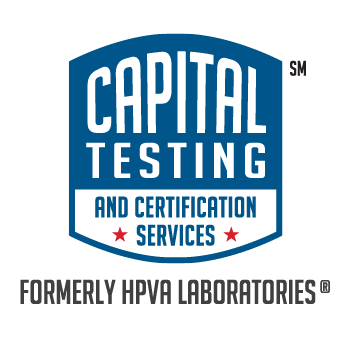Formaldehyde Emissions Certification Program
Capital Testing's formaldehyde emissions certification program provides independent, accredited certification of formaldehyde emissions from regulated composite wood products. Certification occurs at the point of manufacture: the client must develop an emissions quality control manual for the facility, accommodate quarterly in-mill inspections, and perform regular formaldehyde emissions testing. Eventually, mills can apply to Capital Testing for an exemption from some of these requirements.
Since the 1980's our program has expanded from only covering formaldehyde emissions from plywood wall panels used in manufactured housing, to now including a range of composite wood products across various state, federal, and international regulations. Below are descriptions of these regulated products, and the regulations with which our program has been designed to comply.
Capital Testing offers formaldehyde emissions certification to composite wood product production facilities all across the U.S. and Canada. Contact us today for a quote!
Regulated Composite Wood Products
Hardwood Plywood
In the context of formaldehyde regulations, hardwood plywood is a bonded assembly intended for interior use with at least one decorative wood veneer surface, with a core consisting of an assembly of layers or plies of wood veneer (veneer core hardwood plywood), or wood veneers in combination with particleboard or MDF (composite core hardwood plywood). Like all of the regulated products listed here, hardwood plywood is often used in furniture, cabinetry, and architectural woodwork applications.
The emissions limit for these panels is 0.05 parts per million (ppm).
Particleboard
Particleboard is a panel composed of cellulosic material in the form of discrete particles (as distinguished from fibers, flakes, or strands) that are pressed together with resin. If wood veneer is applied to one or both sides of the panel, the resulting product is considered composite core hardwood plywood.
The emissions limit for these panels is 0.09 parts per million (ppm).
Medium Density Fiberboard (MDF)
MDF is a panel composed of cellulosic fibers made by dry forming and pressing a resonated fiber mat. Like with particleboard, if wood veneer is applied to one or both sides of the panel, the resulting product is considered composite core hardwood plywood.
The emissions limit for these panels is 0.11 parts per million (ppm).
Thin Medium Density Fiberboard (tMDF)
Thin MDF, or tMDF, is MDF that has a thickness less than or equal to 8mm or 0.315 inches.
The emissions limit for these panels is 0.13 parts per million (ppm).
REGULATIONS and STANDARDS
U.S. EPA TSCA Title VI
TSCA Title VI establishes formaldehyde emissions standards for composite wood products including hardwood plywood, particleboard, and medium density fiberboard (MDF). As of March 22 2019, these composite wood products must be certified and labeled as compliant with TSCA Title VI emission standards.
TSCA Title VI requires composite wood products to be tested and certified, ensuring only compliant products enter the U.S. supply chain. Certification must be issued by an EPA-recognized third party certifier (TPC). Capital Testing and Certification Services was one of the first TPC’s to become EPA-recognized (TPC-8), and today certifies over 35 facilities for formaldehyde emissions compliance.
CARB ATCM 93120
The California Air Resources Board (CARB) adopted the Airborne Toxic Control Measure (ATCM) 93120 in April 2007. This measure regulates the emission of formaldehyde from composite wood products such as plywood, particleboard, and MDF, and its emissions limits are consistent with those listed in TSCA Title VI. In fact, the U.S. EPA TSCA Title VI regulation was largely based on CARB ATCM 93120.
While TSCA Title VI is a federal regulation which applies to the entire United States, the CARB ATCM remains in effect for products produced in and sold into California. The CARB and EPA regulations are very similar, but they do vary slightly in key areas. As a result, Capital Testing remains both a CARB-approved and EPA-recognized TPC, and has designed its formaldehyde certification program to comply with both regulations at no additional cost to the client.
Canadian formaldehyde regulations (CANFER)
The Canadian Formaldehyde Emissions from Composite Wood Products Regulations (CANFER) is the Canadian counterpart to TSCA Title VI. In general, it was written to align with the requirements of TSCA Title VI. CANFER came into force on January 7th, 2023.
CANFER covers the same products as TSCA Title VI and the CARB ATCM, and shares the same emissions limits. There are numerous minor and not-so-minor differences between the U.S. and Canadian regulations, but in general, TSCA Title VI certified products are also considered CANFER compliant as long as their TSCA Title VI compliance label includes a French translation, and certain recordkeeping and notification requirements are met. Capital Testing certifies to the CARB ATCM and TSCA Title VI regulations while also supporting CANFER compliance as needed.
Product standards
The American National Standards for the products and finished goods covered under the regulations above also include formaldehyde emissions specifications. These specifications are covered under Capital Testing's formaldehyde emissions certification program as well, including:
ANSI/HPVA HP-1 Hardwood and Decorative Plywood
ANSI/HPVA EF Engineered Wood Flooring
ANSI A208.1 Particleboard
ANSI A208.2 Medium Density Fiberboard
LAMINATED PRODUCTS
"Laminated Products" are regulated composite wood products that have had a wood or woody grass veneer affixed to them, and are used in the construction or assembly of a finished good, or component part of a finished good. Prior to March 22, 2024, these products were exempt from the testing and certification requirements of TSCA Title VI. Today, laminated product producers are considered Hardwood Plywood Manufacturers under TSCA Title VI and must be certified as such, unless they use a no-added formaldehyde resin (NAF) or phenol formaldehyde (PF) resin to attach the veneer.
If you are a laminated product producer and you use a resin system other than NAF or PF to attach your veneers, you must be TSCA Title VI certified. Call Capital Testing today with any questions or to receive a quote!
FINISHED GOODS TESTING (FLOORING, CABINETRY, ETC.)
"Finished goods" are any product that contains hardwood plywood, particleboard, or MDF and is not a component part, or part used in the assembly of a finished good. Think of them as products you interact with every day: cabinetry, furniture, laminate and engineered wood flooring, etc.. These types of products do not require certification or formaldehyde emissions testing themselves, but they must be made with certified composite wood products to be considered compliant with the CARB, TSCA Title VI, and CANFER regulations.
Many manufacturers, retailers, and distributors of finished goods want a way of verifying their formaldehyde emissions that goes beyond just accepting their supplier’s certification certificate. For those customers, Capital Testing offers a “Trust But Verify" formaldehyde emissions test program. Simply submit your products on a regular basis (quarterly, annually, etc.) and Capital Testing will prepare them in accordance with CARB’s Standard Operating Procedure for Finished Good Test Sample Preparation Prior to Analysis of Formaldehyde Emissions from Composite Wood Products, and then test them per the ASTM D6007 small chamber test method. Using this procedure, one can compare the emissions of the composite wood products used in production against the appropriate regulatory limits. Consider providing some extra material for us to verify other performance characteristics as well, such as wear resistance, light resistance, slip resistance, and hardness, in our physical properties lab!
Capital Testing cannot make claims of compliance based on these finished goods results: only the applicable enforcement agency can do that. The CARB sample preparation procedure also has the potential to slightly increase the emissions of the core material, meaning the results are best considered a "worst-case" estimate of the panel's emissions. Regardless, companies that participate in this program consider it a critical part of their supply chain risk management program, and the results provide them with an extra layer of confidence in their suppliers.

